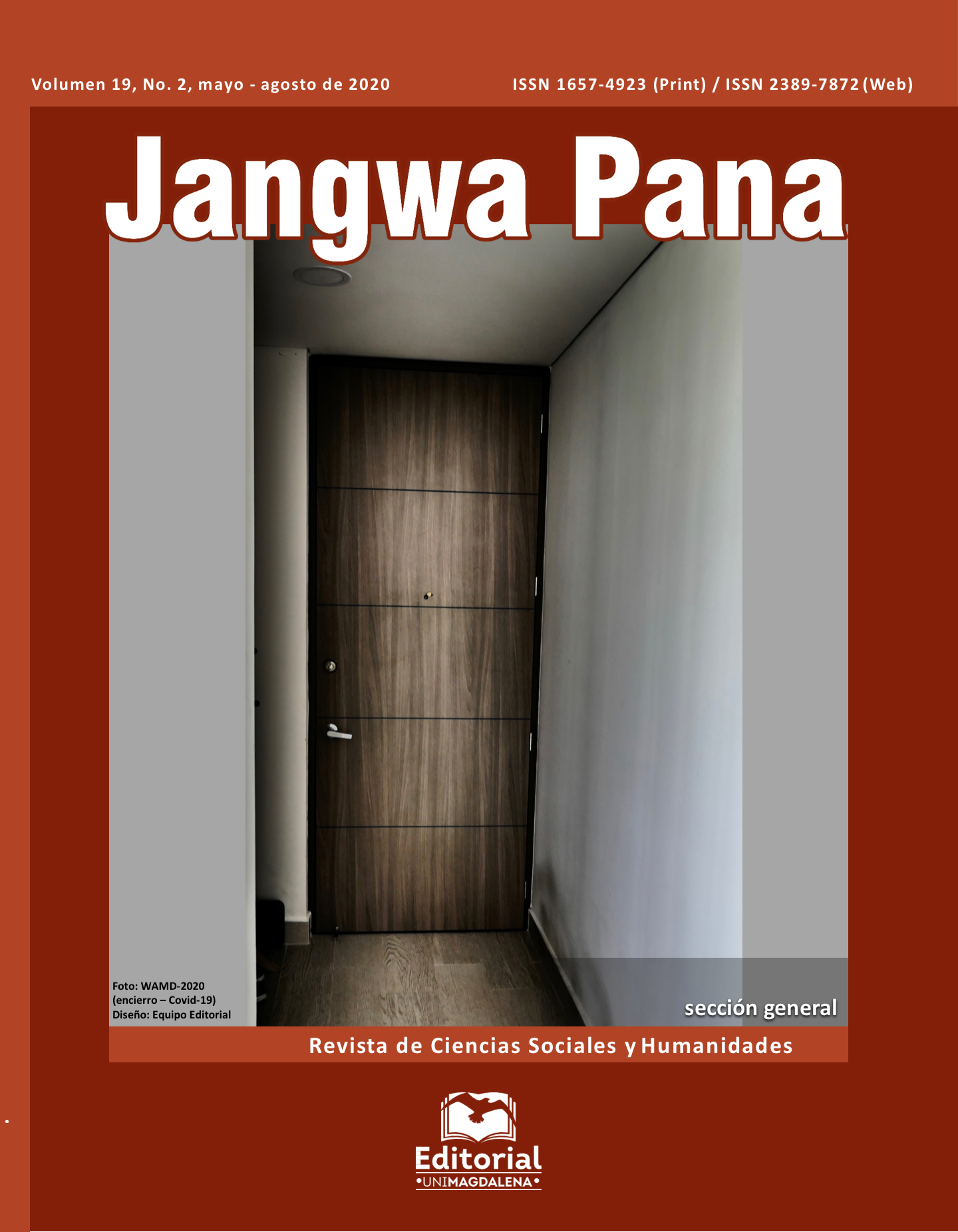School and children as victims of the armed conflict in Tumaco, Colombia
Main Article Content
Abstract
Downloads
Article Details
References
Agamben, G. (2006). Homo sacer: el poder soberano y la nuda vida. Valencia: Pre-textos.
Angarita Cañas, P. E., Gallo, H., Jiménez, B. I., Londoño Berrío y Londoño Usma, D. (2015). La construcción de enemigo en el conflicto armado colombiano 1998-2010. Medellín: Sílaba-Universidad de Antioquia-INER.
Bloch, E. (2007). El principio esperanza. Madrid: Trotta.
De Sousa Santos, B. (2019). Pedagogías de la educación popular. Diálogos entre lo ético y lo político. Cuarto Encuentro de Educación Popular. Bogotá: Universidad Pedagógica Nacional.
Duarte, C. (2018). Hacia una antropología del Estado colombiano: descentralización y gubernamentalidad multicultural. Cali: Sello Editorial Javeriano.
Duarte, C., Andrade, O., Castaño, A., Diaz, L., Giraldo, I., Lacoste, B., . . . Trujillo, D. (2020). Pacífico en conflicto: Dinámicas históricas y territoriales de la guerra 1958-2016. Cali: GEUP.
Castro-Gómez, S. (2000). Ciencias sociales, violencia epistémica y el problema de la invención del otro. La colonialidad del saber: eurocentrismo y ciencias sociales. Perspectivas Latinoamericanas (pp. 145-161). Buenos Aires: Clacso.
E1. (2015). Relato Escuelas en Tumaco 1. (S. R. Ramírez, Entrevistador) Tumaco.
E2. (2015). Relato Escuelas en Tumaco 2. (S. R. Ramírez, Entrevistador)
E3. (2015). Relato Escuelas en Tumaco 3. (S. R. Ramírez, Entrevistador)
E4. (2015). Relato Escuelas en Tumaco 4. (S. R. Ramírez, Entrevistador)
E5. (2015). Relato Escuela en Tumaco 5. (S. R. Ramírez, Entrevistador)
E6. (2015). Relato escuela en Tumaco 6. (S. R. Ramírez, Entrevistador)
Fernández Aller, C. y De Luis, E. (2010). Educación. SJR. Madrid: Entreculturas.
FIP, USAID, OIM. (2014). Dinámicas del conflicto armado en tumaco y su impacto humanitario. Recuperado de http://cdn.ideaspaz.org/media/website/document/52f8ecc452239.pdf
Freire, P. (1996). Pedagogía de la esperanza. Un reencuentro con la pedagogía del oprimido. Río de Janeiro: Siglo XXI.
Fromm, E. (1968). La revolución de la esperanza. Bogotá: Fondo de Cultura Económica.
Galtung, J. (2016). La violencia estructural y directa. Cuadernos de Estrategia, (183), 147-168.
González-Stephan, B. (1994). Escritura y modernización; la domesticación de la barbarie. Revista Iberoamericana, 60, 109-124.
Kvale, S. y Brinkmann, S. (2009). Interviews: learning the craft of qualitative research interviewing. California: Sage.
Londoño, S. (2019). Un camino y múltiples recorridos en la educación para la paz en Colombia. En F. Arrieta, & G. Boffey, Hacia la reconciliación (págs. 197-212). Madrid: Catarata.
Mignolo, W. (1978). Elementos para una teoría del texto literario. Barcelona: Crítica.
Molano, A. (4 de septiembre de 2003). Diálogo con Alfredo Molano. (Cátedra Pública-Universidad de Antioquia, Entrevistador) Universidad de Antioquia.
Moreno, M. A. (2012). La posición del sujeto en el paso a la vida civil; reflexiones a partir de un estudio sociológico. Borromeo, (3), 566-594.
Ramírez, S. R. (2020). Lineamientos para una propuesta educativa critica para escuelas en conflicto armado (tesis doctoral), Universidad de San Buenaventura, Cali.
Salamanca, L. (2007). Entre balas y palabras. Relaciones discursivas en torno al conflicto armado colombiano. Pensamiento Jurídico, 19, 95-118.
Semana. (2 de febrero de 2014). El niño bomba. Recuperado de https://www.semana.com/nacion/articulo/el-nino-bomba/115056-3
Semana. (5 de mayo de 2014). Las FARC usaron ‘niños bomba’ en Tumaco. Recuperado de https://www.semana.com/nacion/articulo/las-farc-usaron-ninos-bomba-en-tumaco/387400-3
Unesco. (2011). Una crisis encubierta: conflictos armados y educación. París: Unesco.
Walsh, C. (2003). Geopolíticas del conocimiento y colonialidad del poder; entrevista a Walter Mignolo. Revista Académica Universidad Bolivariana, 1(4), 1-27.

